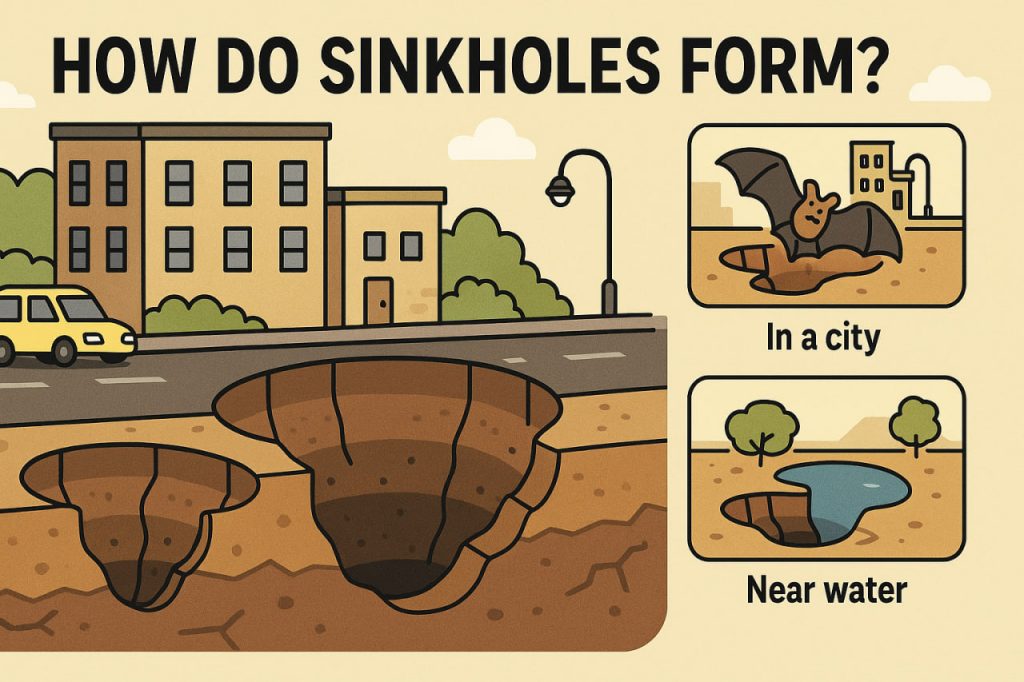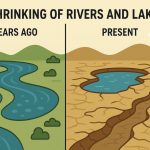Sinkholes are sudden depressions or holes that appear in the ground surface when the supporting material below collapses. They can vary in size from a few meters to several hundred meters across and can cause serious damage to infrastructure, ecosystems, and human safety.
Natural Causes of Sinkholes
Most sinkholes are formed in regions with karst landscapes, where rocks such as limestone, gypsum, or salt can dissolve in water. Rainwater, slightly acidic due to carbon dioxide absorption, seeps into the ground and gradually dissolves the rock layers. Over time, underground cavities expand until the surface layer collapses.
Human-Induced Sinkholes
Human activity significantly contributes to sinkhole formation. Excessive groundwater extraction lowers the water table, removing natural support for the soil. Mining, drilling, poorly managed construction, and broken underground pipes can also weaken the subsurface and trigger collapses.
Increase in Frequency Over the Last Century
In the past 100 years, the frequency of sinkholes has increased, especially in densely populated and industrialized areas. This is due to rising urbanization, higher demand for groundwater, and expansion of infrastructure. Climate change, which causes more intense rainfall and floods, also accelerates sinkhole formation.
Examples From Around the World
- Florida, USA: Known for frequent sinkholes due to limestone-rich geology and heavy groundwater use.
- China: Rapid urban growth and mining activities have led to thousands of sinkholes in recent decades.
- Middle East: Around the Dead Sea, sinkholes form due to water level decline and salt layer dissolution.
Risks and Consequences
Sinkholes can destroy roads, houses, and farmland in seconds. They disrupt water supplies, damage ecosystems, and endanger lives. In urban areas, their sudden appearance poses a serious hazard to infrastructure and residents.
Prevention and Monitoring
Scientists monitor sinkhole-prone areas using ground-penetrating radar, satellite imaging, and hydrological studies. Reducing groundwater overuse, improving drainage systems, and responsible land management can decrease the risk of catastrophic collapses.
Conclusion
Sinkholes form naturally but are increasingly triggered by human activity. Their growing frequency is linked to groundwater exploitation, climate change, and urban expansion. Understanding their causes and monitoring vulnerable regions is crucial to reducing risks.
Glossary
- Sinkhole – sudden collapse of the ground caused by underground voids.
- Karst – landscape formed by dissolution of soluble rocks like limestone or gypsum.
- Groundwater table – the upper level of underground water storage.
- Dissolution – process of rock dissolving in water.
- Ground-penetrating radar – technology for imaging subsurface structures.
- Infrastructure – roads, buildings, and systems built for human use.


